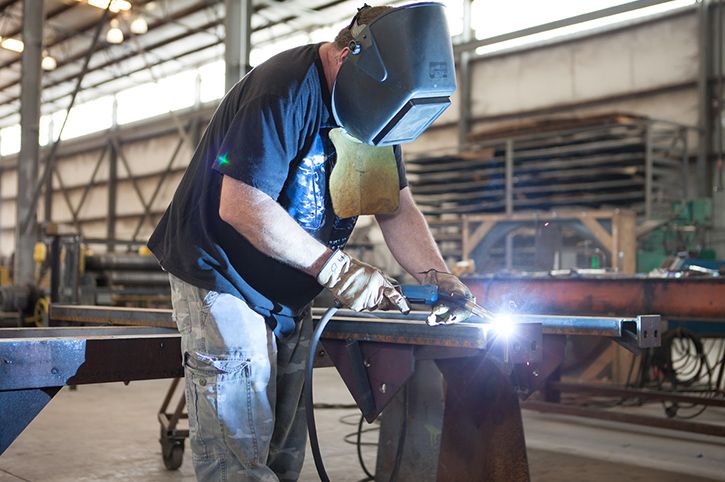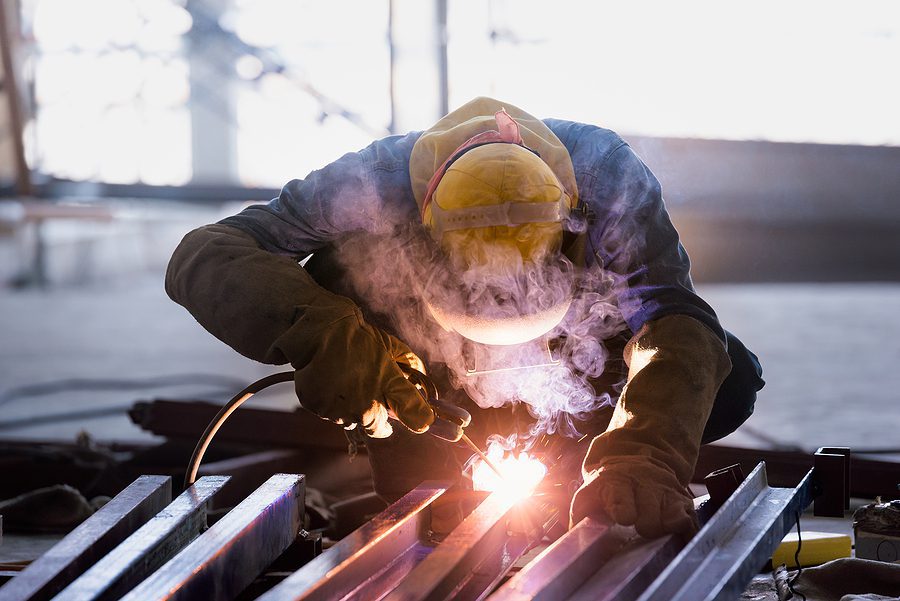Usual Welding Repair Service Issues and How to Address Them Successfully
Welding fixings often encounter a variety of issues that can threaten the honesty of the end product. Usual issues consist of inadequate penetration, porosity, and imbalance, among others. Each issue presents special obstacles that call for particular techniques for resolution. Recognizing these problems is vital for welders aiming to boost their abilities and end results. This conversation will explore these typical welding fixing issues and reliable methods to resolve them.
Insufficient Infiltration
Inadequate infiltration takes place when the weld steel fails to totally fuse with the base material, resulting in weak joints and prospective architectural failures. This issue usually comes from not enough warm input, wrong electrode angle, or inappropriate welding speed. Welders might experience insufficient penetration as a result of a miscalculation of the necessary criteria for a specific material thickness or type. Additionally, contamination on the base material's surface can hinder efficient bonding, aggravating the issue. To deal with poor infiltration, welders must assure proper settings on their equipment and maintain a tidy job surface area. Normal examination of welds is recommended to identify any type of shortages early, permitting timely adjustments and the avoidance of compromised structural stability in welded settings up.
Porosity
Porosity is a common defect in bonded joints that shows up as little gas bubbles entraped within the weld metal. This defect can jeopardize the honesty of the weld, bring about minimized strength and possible failure under stress and anxiety. Montana Mobile Welding and Repair Belgrade Welding. Porosity commonly develops from contamination, wetness, or improper welding methods, which enable gases to escape right into the molten weld pool. To address porosity, welders must ensure correct surface preparation, maintain a clean workplace, and make use of ideal welding parameters. In addition, selecting the appropriate filler product and shielding gas can alleviate gas entrapment. Normal inspection and screening of welds can help determine porosity early, ensuring prompt restorative activities are taken, thereby preserving the high quality and reliability of the welded structure
Imbalance
Misalignment in welding can develop from various factors, consisting of incorrect setup and thermal expansion. Comprehending the origin triggers is vital for effective resolution. A number of adjustment techniques are offered to realign parts and assure structural honesty.
Causes of Misalignment
Welding misalignment usually comes from a range of underlying concerns that can compromise structural honesty. One main cause is improper fit-up of parts prior to welding, which can cause gaps and uneven surface areas. Variations in thermal expansion during the welding process can additionally cause distortion, specifically if the products being signed up with have different coefficients of development. In addition, inadequate clamping and fixturing might stop working to hold components securely in area, causing movement throughout welding. Inadequately conserved equipment, including welding devices and devices, might introduce inconsistencies in the weld bead, additional adding to imbalance. Finally, operator error, originating from inadequate training or experience, can additionally play a substantial role in creating misaligned welds.
Correction Strategies Readily Available
Dealing with misalignment properly needs a mix of corrective strategies customized to the particular issues at hand. One typical method is the usage of fixtures or jigs to hold components in the appropriate setting throughout welding, making sure consistent positioning. Furthermore, preheating the materials can assist minimize distortion and boost fit-up. For considerable imbalance, mechanical realignment strategies, such as using hydraulic jacks or clamps, can be employed to correct the position before welding. Post-weld warmth treatment might likewise be essential to alleviate anxieties caused by imbalance. Mindful assessment and modification throughout the arrangement phase can prevent imbalance problems from coming to be substantial problems, promoting a smoother welding procedure and improving general structural integrity.
Distortion
Distortion is a common challenge in welding that can develop from numerous factors, including irregular heating & cooling. Comprehending the root causes of distortion is necessary for applying reliable avoidance techniques. Resolving this problem not just improves structural integrity however also boosts the general quality of the weld.
Root causes of Distortion
When based on the intense warm of welding, materials commonly undertake modifications that can cause distortion. This phenomenon primarily emerges from thermal development and tightening throughout the welding process. As the weld area heats up, the product broadens; upon air conditioning, it acquires, which can develop internal anxieties. In enhancement, uneven home heating across a work surface can worsen these tensions, leading to warping or flexing. The sort of material also plays a significant duty; steels with varying thermal conductivity and coefficients of growth might react in different ways, causing unforeseeable distortions. Moreover, inadequate joint layout and poor fixturing can contribute to imbalance throughout welding, raising the likelihood of distortion. Recognizing these causes is essential for efficient welding repair service and avoidance techniques.
Avoidance Techniques
Effective prevention techniques for distortion throughout welding focus on controlling heat input and ensuring correct joint layout. Keeping a regular warmth input aids to lessen thermal expansion and tightening, which can lead to distortion. Making use of techniques such as pre-heating the work surface can also decrease the temperature slope, advertising uniform heating. In addition, picking ideal joint layouts, such as T-joints or lap joints, can improve security and lower stress focus. Implementing proper fixturing to protect the work surfaces in position further aids in keeping placement during the welding procedure. Lastly, staggered welding series can distribute warmth more equally, stopping local distortion. By using these techniques, welders can significantly decrease the chance of distortion and boost the total high quality of their welds.
Breaking
Breaking is an usual issue experienced in welding repairs, commonly resulting from numerous elements such as inappropriate air conditioning prices, material option, or insufficient joint preparation. The event of cracks can considerably jeopardize the stability of the weld, bring about possible failings during operation. To address this concern, welders should initially assess the origin, ensuring that products are suitable and properly selected for the specific application. Additionally, managing the cooling price throughout the welding procedure is necessary; fast air conditioning can generate stress and cause breaking. Correct joint design and prep work also add to minimizing the threat. Implementing these techniques can enhance weld high quality and longevity, eventually lowering the chance of splitting in ended up weldments.

Incomplete Blend
A substantial concern in welding repair services is incomplete fusion, which happens when the weld metal does not effectively bond with the base product or previous weld passes - Montana Mobile Welding and Repair Welding. This issue can result in weak points in the joint, potentially endangering the integrity of the welded framework. Variables adding to incomplete fusion consist of not enough warm input, incorrect welding strategy, and contamination of the surface areas being signed up with. To address this problem successfully, welders must ensure proper pre-weld cleansing and surface prep work, as well as change their welding parameters to attain appropriate penetration and combination. Normal evaluation during the welding procedure can additionally assist identify incomplete fusion early, allowing for timely rehabilitative procedures to improve the general high quality of the weld
Overheating
While welding repairs can improve architectural integrity, overheating presents a substantial difficulty that can bring about material deterioration. Excessive warmth throughout welding can alter the mechanical homes of metals, resulting in lowered strength, enhanced brittleness, and warping. This sensation is specifically essential in high-stress applications where architectural integrity is vital. Recognizing overheating can involve visual examinations for discoloration or distortion, along with checking click here temperature level throughout the welding process. To mitigate the dangers related to getting too hot, welders should employ ideal techniques, such as regulating warm input, changing traveling speed, and using appropriate filler products. Additionally, applying pre- and post-weld warm treatments can help restore material residential or commercial properties and improve the general high quality of the repair, making sure long-lasting performance and security.
Often Asked Questions
What Are the Typical Signs of a Welding Defect?

How Can I Check My Welds for High quality?
To test welds for high quality, one can utilize visual examinations, ultrasonic screening, and radiographic methods. Each technique guarantees architectural honesty, recognizes flaws, and validates adherence to defined standards, inevitably improving the reliability of the bonded joints.
What Security Preventative Measures Should I Take While Welding?
When welding, one need to focus on safety and security by using appropriate personal safety tools, making certain appropriate ventilation, securing flammable materials away, preserving a tidy office, and understanding surroundings to avoid injuries and accidents.
Can I Repair a Weld Without Renovating the Entire Joint?
Fixing a weld without remodeling the entire joint is possible, depending on the damage (Montana Mobile Welding and Repair Welding). Strategies such as grinding, including filler material, or utilizing a welding procedure can efficiently address certain defects while protecting the surrounding structure
What Equipment Are Crucial for Efficient Welding Services?
Essential devices for effective welding fixings consist of a welding maker, wire brush, mill, safety equipment, clamps, and filler materials. Each device plays a crucial duty in making certain top quality and safety throughout the repair process. Porosity typically emerges from contamination, moisture, or inappropriate welding techniques, which enable gases to get away into the molten weld swimming pool. Improperly conserved equipment, including welding equipments and tools, may present variances in the weld bead, further adding to misalignment. When subjected to the intense warm of welding, products often undertake changes that can lead to distortion. Breaking is a typical concern experienced in welding repair work, often resulting from numerous elements such as improper cooling rates, product option, or insufficient joint preparation. A substantial problem in welding repairs is insufficient fusion, which happens when the weld metal does not properly bond with the base product or previous weld passes.